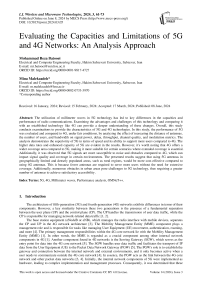Evaluating the Capacities and Limitations of 5G and 4G Networks: An Analysis Approach
Автор: Mohammad Reza Batooei, Mina Malekzadeh
Журнал: International Journal of Wireless and Microwave Technologies @ijwmt
Статья в выпуске: 3 Vol.14, 2024 года.
Бесплатный доступ
The utilization of millimeter waves in 5G technology has led to key differences in the capacities and performance of radio communications. Examining the advantages and challenges of this technology and comparing it with an established technology like 4G can provide a deeper understanding of these changes. Overall, this study conducts examinations to provide the characteristics of 5G and 4G technologies. In this study, the performance of 5G was evaluated and compared to 4G, under fair conditions, by analyzing the effect of increasing the distance of antennas, the number of users, and bandwidth on signal power, delay, throughput, channel quality, and modulation metrics. The analysis demonstrates the superiority of 5G in terms of speed and its ability to support more users compared to 4G. The higher data rates and enhanced capacity of 5G are evident in the results. However, it's worth noting that 4G offers a wider coverage area compared to 5G, making it more suitable for certain scenarios where extended coverage is essential. Additionally, it was observed that 5G signals are more susceptible to noise and obstacles compared to 4G, which can impact signal quality and coverage in certain environments. The presented results suggest that using 5G antennas in geographically limited and densely populated areas, such as rural regions, would be more cost-effective compared to using 4G antennas. This is because fewer antennas are required to serve more users without the need for extensive coverage. Additionally, numerous obstacles in urban areas pose challenges to 5G technology, thus requiring a greater number of antennas to achieve satisfactory accessibility.
5G, 4G, Millimeter waves, Performance analysis, OMNeT++
Короткий адрес: https://sciup.org/15019258
IDR: 15019258 | DOI: 10.5815/ijwmt.2024.03.05
Текст научной статьи Evaluating the Capacities and Limitations of 5G and 4G Networks: An Analysis Approach
The architecture of fifth-generation (5G) and fourth-generation (4G) networks exhibits differences in terms of their components. However, a key similarity between these two generations is the presence of a fundamental separation between the user plane (UP) and the control plane (CP). The UP handles the transmission of user data traffic, while the CP is responsible for managing network-related data traffic [1, 2].
The base station equipment (eNodeB or eNB), which manages the radio interface with mobile devices, separates the CP and UP in the 4G network architecture [3]. The Mobility Management Entity (MME) component plays a management role and is responsible for tasks like managing User Equipment (UE) movement, authentication, roaming, and more [4]. The primary management responsibilities within the 4G core network lie with the Mobility Management Entity (MME) [1]. In other words, the MME is regarded as a crucial component among other internal network components in 4G [1]. Another component found in 4G networks is the Serving Gateway (SGW), which serves as the entry point for data into the 4G core network [5]. The SGW handles user data traffic and facilitates the transport of IP data from the User Equipment (UE) to the Packet Data Network Gateway (PGW) [5]. The PGW's role is to establish the gateway and connection between the internal network and external environments, and it only becomes active when a user needs to communicate outside the 4G core network [4]. In essence, the PGW acts as the link between the 4G core network and other packet data networks [3, 4]. Initially, the internal network components of 5G were implemented as hardware, leading to complex implementation and management processes. Consequently, it was determined that these components should be implemented as a fundamental service. Within this architecture, the User Plane Function (UPF) serves as the interface for external communication, handling all data plane functions for connecting to packet data networks [3]. Essentially, the UPF component is responsible for directing packets from the 5G core network to the Packet Data Networks [1]. The Access and Mobility Management Function (AMF) management component plays a critical role in the 5G network, as it manages user access and mobility. It is part of the division between the Control Plane (CP) and User Plane (UP) components and is responsible for these functions [1, 3, 4]. Additionally, the Session Management Function (SMF) component oversees the management of user sessions [1]. The Mobility Management Entity (MME) operates alongside the 5G core network and is activated when a user requires a 4G network [4]. The limitations of flexibility in the components of 4G have been overcome in 5G technology through the implementation of fully software-based components. The programmable architecture of 5G enables operators to swiftly meet diverse and novel application requirements [2, 3]. The development of 5G networks has resulted in a significant increase in cellular network traffic growth, estimated to be at least 1000-fold while maintaining high reliability [6, 7]. Unlike 4G networks, which are limited to a frequency range of 600 MHz to 6 GHz, 5G networks can utilize three frequency ranges: Sub-1 (below 1 GHz), mid-band Sub-6 (between 1 to 6 GHz), and mmWave (between 6 to 100 GHz) [8]. Both 4G and 5G employ Small-cell and Macro-cell base stations, with Small-cells having a shorter range and Macro-cells covering larger areas. In 5G technology, Small-cells are considered a prominent and essential feature [9].
The key distinction between 5G and 4G networks is the utilization of millimeter waves in 5G technology, which leads to significant variations in the performance and efficiency of these two technologies. While 5G technology can employ lower-frequency waves, it also encompasses the characteristics of 4G technology within itself. The 4G technology has been widely adopted by billions of users worldwide, but it has played its role, and the 5G technology that will eventually replace it is becoming widespread. Therefore, examining the characteristics and performance of each technology under different conditions can be crucial in determining their advantages and limitations. On the other hand, to provide these attributes, various criteria must be considered during implementation to make the significant disparities evident. Based on this, the key contributions of this study include:
• Examining the effects related to distance, comparing signal strength and coverage range, and assessing the impact of urban obstacles and increased environmental noise on the signal quality and communications of 5G and 4G technologies, scenarios have been implemented and executed in fair conditions using the OMNeT++ simulator.
• To assess network capacity and compare the limitations of supporting device counts in 5G and 4G technologies, scenarios have been implemented and executed in the OMNeT++ simulator.
• Considering that 5G and 4G technologies allow for the utilization of both FDD and TDD technologies, simulations in this realm have been designed and executed in the OMNeT++ to compare the performance of the two networks in both FDD and TDD modes.
• The analysis of the effects of bandwidth variation and payload size change on user experience in 5G and 4G technologies has been addressed through the execution of multiple scenarios in the OMNeT++ simulator. The simulations have been designed in a way that the characteristics of each technology are evident and are not limited to specific conditions.
2. Related Works
The rest of the work is structured as follows: Section 2 delves into the examination of the latest relevant works. Section 3 presents the implemented simulations. Section 4 provides the simulation results and relevant analysis. Finally, Section 5 concludes the paper.
Comparing 5G and 4G technologies allows for a correct understanding of their limitations and capacities. In [10], high-quality video streaming services in mobile environments are discussed, with a focus on analyzing delay and video experience quality using a multi-layer approach to assess video transmission in both 5G and 4G networks. The research demonstrates that 5G networks outperform 4G in terms of performance. The research appears to provide a generalized conclusion based on the limited conditions considered, which may not be correct in different conditions. Furthermore, [11] presents a thorough comparison of 5G and 4G technologies, highlighting their differences and capacities. In [12], the performance of 5G and 4G networks in mobile service providers is studied, examining various perspectives, including the impact of obstacles and interference. This study examines only a limited number of parameters, thus lacking a good view of the subject.
Comparing 5G and 4G technologies allows for a correct understanding of their limitations and capacities. In [10], high-quality video streaming services in mobile environments are discussed, with a focus on analyzing delay and video experience quality using a multi-layer approach to assess video transmission in both 5G and 4G networks. The research demonstrates that 5G networks outperform 4G in terms of performance. The research appears to provide a generalized conclusion based on the limited conditions considered, which may not be correct in different conditions. Furthermore, [11] presents a thorough comparison of 5G and 4G technologies, highlighting their differences and capacities. In [12], the performance of 5G and 4G networks in mobile service providers is studied, examining various perspectives, including the impact of obstacles and interference. This study examines only a limited number of parameters, thus lacking a good view of the subject.
Moreover, [13, 14, 15] examine the characteristics of millimeter waves in 5G technology, studying their vulnerability to static and mobile obstacles through simulation implementations. These studies propose protocols to effectively mitigate limitations but solely focus on 5G technology, lacking comparisons with other technologies. The introduction of 5G technology aimed to achieve high data rates and low latency. However, its limited coverage and susceptibility to obstacles pose challenges, resulting in frequent switching between 5G and 4G networks. To address this issue, researchers, including Mahmoud et al. [16], have examined a combined approach to devise a suitable scheduling strategy for seamless switching between the two networks. The proposed method's effectiveness was evaluated through a performance comparison in both 5G and 4G networks. In a separate study, Luciano et al. [17] analyzed the simultaneous performance of 5G and 4G signals in the 700 MHz band to minimize interference.
The papers [18, 19] conducted comparative analyses of LoRaWAN, 5G, and 4G technologies, proposing their integrated utilization to overcome respective limitations. However, no practical implementation has been presented to address this issue. In [20], the authors propose and evaluate models for enhancing 5G antenna performance, considering factors like distance, obstacles, and key parameters (RSRP, RSSI, RSRQ, SNIR) and effective coverage.
The study [21] conducts a comparative analysis of 5G technologies against 4G, with a specific focus on the 2.1GHz frequency. It evaluates the performance of FDD NR, TDD NR, and FDD LTE technologies, taking into account parameters like distance, antenna strength, and similar scenarios. Nevertheless, it is worth noting that the comparison's scope is limited due to the constraints of the considered parameters. In [7], Chen et al. presented an analysis of delay resources in 5G and 4G networks, with a particular focus on network design strategies to minimize delays. The study primarily aimed to address the challenges associated with designing high-precision, low-delay communications for realtime information applications.
The study [22] introduces beam-space multiplexing technology in 5G and 4G networks, comparing their implementation through simulations. The study discusses potential benefits for 6G adoption and practical strategies, focusing on distance, UEs, TDD, and FDD parameters in the comparison. However, an analysis encompassing a wider range of parameters would have strengthened the study. [23] compared 5G and 4G networks using millimeter waves and beamforming techniques. The study revealed that employing this method in 5G networks increased user capacity and reduced energy consumption to one-third of 4G networks.
In [24], the authors compare LoRa and NB-IoT technologies using two simulation scenarios: one in a densely populated city and the other in a rural area with multiple base stations. The study concludes that NB-IoT performs better in sub-GHz frequency bands in rural environments, while LoRa offers superior coverage in urban settings. Ensuring continuous and reliable communication is crucial for unmanned aerial vehicles (UAVs) with beyond visual line of sight (BVLOS) flight capabilities. In [25], the research aims to propose a model for reliable communication by examining reference signal received power (RSRP) and reference signal received quality (RSRQ). The study highlights the impact of UAV height and distance from the base station on communication and confirms that 4G technology can maintain robust communication up to distances of 400 meters.
The surge in connected devices and LTE usage has prompted the use of unauthorized bands in LTE technology, including Licensed Assisted Access (LAA). However, these bands are already occupied by technologies like Wi-Fi. In [26], a new mechanism called ReLBT for Wi-Fi and LTE-LAA coexistence is introduced. It's important to note that this study does not mention 5G technology, and the comparison is focused solely on LTE-LAA, Wi-Fi, and ReLBT technologies in terms of metrics like Latency and Throughput.
A notable distinction between 5G and 4G networks lies in the deployment of Small-Cells and Macro-Cells technologies. In [27], the research conducts a performance comparison between Small-Cell and conventional macro networks through simulations of medical video streaming. Various conditions, including the increase in the number of users, are applied to evaluate their performance.
By studying previous works, some limitations are depicted. The issue that often stands out is presenting general conclusions based on specific and limited conditions and scenarios. In real-world scenarios, various situations may occur, the outcomes of which differ from the mentioned conclusions. In this regard, considering the diverse conditions that occur in the real world, it is necessary to consider various criteria so that the presented results can, to some extent, determine a suitable option for users from different perspectives. For instance, in the real world, parameters such as distance, environmental noise, number of users, and obstacles together can significantly influence the selection of the appropriate technology, and neglecting any of them would render the results not generalizable to the real world. Another important matter is that solely examining the 5G technology does not provide a deep insight into its capabilities and performance. Comparing it with a well-known technology like 4G can better highlight the characteristics of each. In response to the mentioned limitations, this study has conducted simulations with various criteria using the OMNeT++ simulation tool to implement validations of the characteristics of 5G and 4G technologies, as described in the following simulations.
3. Simulation Setup
The OMNeT++ simulator and INET framework have been utilized to implement the simulations in this article. The topologies implemented in each of the technologies are shown in Fig. 1.
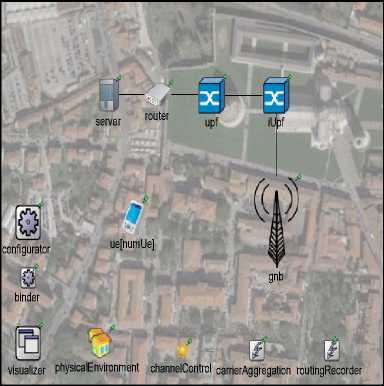
Fig. 1. 5G Topology (left) and 4G Topology (right)
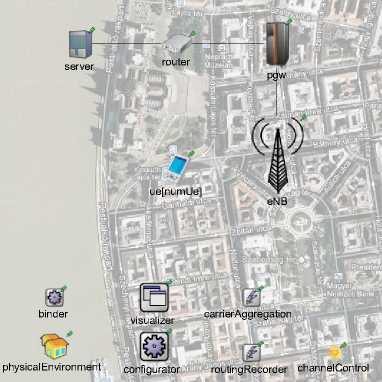
In all scenarios, a stream of data is sent from a server in the cloud network to the UE using the UDP protocol under fair conditions. The metrics used to evaluate the two networks are described separately in each scenario.
-
3.1. UE to Antenna Distance (UAD)
-
3.2. Noise Impact (NI)
-
3.3. UE Device Count: Measuring Network Utilization (UEC)
-
3.4. Duplexing (DUP)
-
3.5. Signal Attenuation and Obstacles (SAO)
-
3.6. Number of Resource Blocks (NRB)
As mentioned, 5G and 4G technologies utilize different frequency ranges, leading to varying effects when distance is increased. To demonstrate this, a simulation is implemented in which the UE initiates its movement from the side of the antenna and continues to move until the connection is interrupted in one of the technologies, specifically up to a distance of 580 meters. As the UE moves away, the impact of distance on signal and communication quality differs due to the distinct frequencies of 5G and 4G technologies. The simulation continues until the technologies are disconnected, where the antenna signal weakens to a point where accessing network services becomes practically impossible at the UE's location. The simulation utilizes Numerology values of 2 for 5G and 0 for 4G, evaluating metrics such as recvPower, SINR, CQI, Shadowing, and Pathloss.
An essential factor to evaluate the effects of both technologies is environmental noise, which can cause communication disturbances by affecting radio waves. The simulation involves increasing environmental noise levels within the range of 0 dB to 56 dB to examine its effects on key metrics, including delay, throughput, CQI, SNR, and packet loss. Furthermore, both topologies maintain a fixed distance between the UE and the antenna.
Considering that 5G and 4G technologies have different capacities in supporting the number of users due to different implementation structures, in this scenario, the impact of changing the number of UEs from 1 to 250 on each technology is investigated. The simulation aims to determine the capacity of each technology in supporting users, revealing which one can serve more users effectively. To equalize UE conditions in terms of distance to the antenna, the UEs are positioned in a circular shape around the antenna. Additionally, UEs move at a constant speed around the antenna to simulate similar obstacle impacts in the environment. While an alternative approach could have gathered UEs at a fixed distance and one point from the antenna, this method is implemented for a more attractive and realistic scenario. The measured metrics include Delay and CQI.
Duplexing is a communication method that allows simultaneous transmission between UE and an antenna. Halfduplex enables either sending or receiving data at a time (e.g., walkie-talkie), while full-duplex allows both functions simultaneously (e.g., phone call). Frequency Division Duplexing (FDD) allocates separate frequency bands for uplink and downlink, while Time Division Duplexing (TDD) uses the same frequency band but divides it into time slots for upload and download. FDD and TDD are crucial for efficient wireless communication technology advancement, and they are used in both 5G and 4G technologies. This scenario investigates the impact of these technology variations on network delay metrics. To gain a better understanding and access more delay data, measurements were taken at different UE distances from the antenna for both FDD and TDD modes. The simulation sets Numerology and Carrier Frequency to 0 and 2GHz, respectively, for both technologies.
Urban obstacles are another determining parameter that can have distinct effects on 5G and 4G signals. The purpose of this simulation is to observe how urban obstacles affect the characteristics of both technologies and to identify which technology demonstrates greater resistance to such impediments. This understanding can help address weaknesses and improve service quality for users. The UE is placed at a fixed distance of 300 meters from the antenna, a deliberate choice to introduce numerous urban obstacles along the communication path. At this distance, the weakening of the signal accentuates the UE's sensitivity and vulnerability to obstacles, making even minor barriers have a discernible impact on the communication process. The metrics are measured at this distance and then repeated with an obstacle introduced by moving the UE inside a building, simulating walls as obstacles. Finally, the results are evaluated and compared. The evaluated metrics in this scenario are Delay and Throughput. Analyzing these metrics provides valuable insights into the technology's performance in urban environments with obstacles.
An essential aspect to take into account when comparing 5G and 4G technologies is bandwidth. Network administrators can adjust bandwidth, and it plays a critical role in optimizing network performance. While it is widely believed that increasing bandwidth reduces delay and improves throughput, this simulation highlights that this may not always be the case. In fact, it can have adverse effects if not set correctly, potentially leading to undesirable service quality. Therefore, careful management and understanding of bandwidth allocation are crucial for ensuring optimal network performance.
The simulation comprises two parts. In the first part, bandwidth is increased alongside the size of UDP payload packets, and the results are evaluated based on each technology's metrics. The UDP packet size varies from 20 b to 65 KB, ensuring no packet loss due to size mismatch with the bandwidth. Bandwidth modification is accomplished by changing Resource Blocks within the [5,100] range.
In the second part, the packet size remains fixed at 5 KB, focusing solely on evaluating the effect of increased bandwidth on network metrics. It's important to note that the UDP packet size can be set anywhere between 20 B to 65 KB. The metrics evaluated in this scenario are delay and throughput. Carrier Frequency is set to 5 GHz for 5G and 2.4 GHz for 4G, while Numerology is set to 1 for both technologies in this simulation. Common parameters in the above scenarios are provided in Table 1, and simulation scenario parameters are shown in Table 2.
Table 1. Common Simulation Parameters
|
Numerology(n) |
Carrier Frequency (GHz) |
Bandwidth (MHz) |
UE C (n) |
Packet Len (B) |
|
|
4G |
0 |
2.4 |
24 |
1 |
5000 |
|
5G |
2 |
24 |
132 |
1 |
5000 |
Table 2. Simulation Scenarios Parameters
|
Scenario |
N RB (n) |
Bandwidth (4G, 5G) |
Distance (m) |
|
|
UAD |
100 |
20 |
132 |
[0,600] |
|
NI |
100 |
20 |
132 |
180 |
|
UE C |
100 |
20 |
132 |
100 |
|
DUP |
6 |
1.4 |
25 |
[200,400,600] |
|
SAO |
100 |
20 |
132 |
300 |
|
N RB (P1) |
[5,100]* |
[1.4,15] |
[11,273] |
300 |
|
N RB (P2) |
[5,100]* |
[1.4,15] |
[11,273] |
300 |
* Note. Bandwidth (MHz). The minimum amount for 4G technology is 5 and for 5G technology is 6.
4. Evaluation and Results
4.1. UAD
Through the implementation of multiple simulations, efforts have been made to provide the characteristics of 5G and 4G technologies. The simulations encompass general scenarios to show the specific parameter impacts on the performance and functionality of each technology. Critical parameters addressed in these simulations include the influence of distance on received signal and communication quality, the effect of environmental noise on received signal in each technology, the impact of increasing the number of users and comparing the capacity of each network, the effects of transitioning communication technology in FDD and TDD modes, the influence of urban obstacles on signal, and the effects of bandwidth increase on user experience through delay and download speed metrics. In the following, the results obtained from the simulations are provided.
One crucial criterion for comparing 5G and 4G technologies is the range of antenna coverage. To evaluate this, the distance between the UE and the antenna was extended until the connection was practically cut off in one of the technologies. The receiving signal power is provided in Fig. 2.
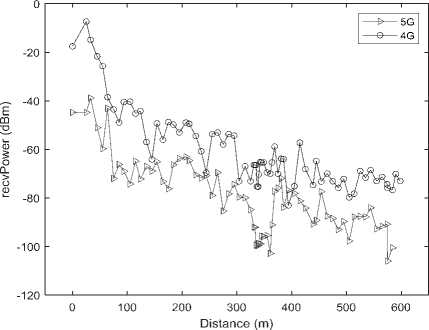
Fig. 2. The Effect of Distance Increase on recvPower
The results above show that as the UE moves away from the antenna, both 4G and 5G technologies experience a decrease in received signal strength. Furthermore, this scenario also highlights the weaker signal strength of 5G compared to 4G, as indicated by the recvPower metric. Results from the simulation showed that at a distance of 584 meters from the antenna, the UE's connection to the 5G antenna was entirely lost, while the 4G technology continued to provide services without any issues. To grasp the presented data, a comprehension of specific concepts is required. Metrics such as Reference Signal Received Power (RSRP), Reference Signal Received Quality (RSRQ), and Received Signal Strength Indicator (RSSI) are utilized to quantify the strength of the received signal. RSRP and RSSI metrics are expressed in dBm units, while RSRQ is measured in dB units.
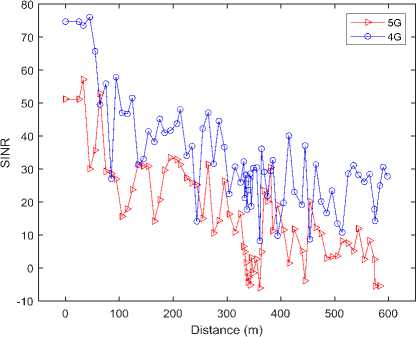
Fig. 3. The Effect of Distance Increase on SINR (left) and CQI (right)
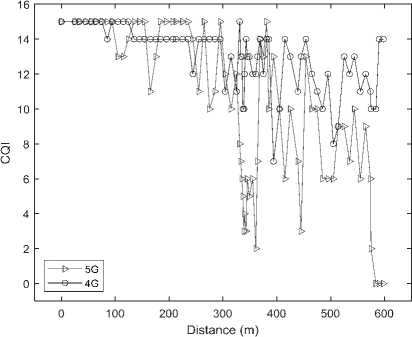
On average, 5G signals are -16.95 dBm weaker than 4G signals at the same distances. The reason for this phenomenon is attributed to the nature of millimeter waves. Millimeter waves with higher frequencies have shorter wavelengths and are weaker compared to lower frequencies. The RSSI index classifies signal strength as ≤ -95 dBm for No Signal/Disconnection conditions [20]. Based on this criterion, the 5G signal is considered as No Signal/Disconnection when located beyond a distance of 575 meters. Following this criterion, signal strength ranging from -75 dBm to -95 dBm is categorized as Fair to Poor [20]. Consequently, since the 4G signal's strength measures at -75.9 dBm within this range, the UE experiences no disruption, and the service continues without any issues. Therefore, it can be inferred that 4G networks offer a broader coverage range than 5G networks. Moreover, increasing the distance from the antenna has a greater effect on 5G, affecting the quality of its services. To achieve a more accurate conclusion, depending solely on the RSSI criterion is inadequate. Therefore, for further investigation, it is necessary to measure the SINR and CQI criteria as well. Fig. 3 depicts the SINR and CQI results at various distances from the antenna.
The SINR represents the signal-to-interference and noise ratio. Maintaining excellent communication quality based on this criterion requires a value above 20 dB. Communication quality is considered good within the range of 20 to 13 dB, categorized as poor within the range of 13 to 0 dB, and signals below 0 dB are classified as no signal [20]. The results above illustrate that the impact of increasing distance is more significant on 5G signals due to weaker high-frequency signals compared to 4G signals. Beyond a distance of 575 meters, the signal quality of the 5G network falls within the No Signal/Disconnection range. Thus, SINR serves as another criterion indicating 5G signals' greater susceptibility to distance compared to 4G signals.
Regarding CQI evaluation, it has been observed that 4G signals exhibit better stability than 5G signals. Beyond a distance of 330 meters, 5G experiences unstable communication quality. At 584 meters, the CQI value reaches zero for the 5G network, while 4G communication maintains an average CQI of over 12 throughout. This outcome is attributed to the characteristics of millimeter wave high-frequency signals, making 5G weaker and more susceptible to signal degradation with increasing distance. Another measure that improves perceptions about distance effects is the shadowing and path loss measure. Fig. 4 shows the results of this measurement.
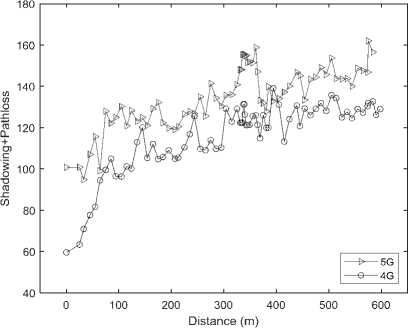
Fig. 4. The Effect of Distance Increase on Pathloss + Shadowing
The influence of distance on the rise of path loss and shadowing is evident in 5G and 4G technologies. The results above demonstrate that signal strength diminishes and susceptibility to obstacles intensifies with increasing distance. According to this criterion, it can be seen that as the distance increases, the 5G signal is more vulnerable than 4G. As mentioned, this susceptibility of most 5G signals from a distance is attributed to the nature of millimeter waves. If extensive coverage coupled with cost-saving is the priority for the service provider, 4G technology with fewer antennas provides broader coverage compared to high-frequency 5G antennas. However, this is contingent upon speed and network capacity not being the primary concerns. To achieve desirable accessibility in 5G technology, installing more antennas in areas with high geographical expanses is inevitable.
-
4.2. NI
To better understand the attributes of 5G and 4G networks, delving into the impact of environmental noise on the signal emerges as a significant criterion. In this simulation, efforts were made to induce interference by elevating environmental noise in 5G and 4G signals, subsequently examining the susceptibility of each technology to noise. The results are presented in Table 3. Fig. 5 also shows the effects of environmental noise on the delay and throughput in 5G and 4G technologies.
Table 3. Results of Noise Impact scenario
|
5G |
4G |
|||||||
|
Noise |
CQI |
Modulation |
SNR |
PacketLoss |
CQI |
Modulation |
SNR |
PacketLoss |
|
0 |
14 |
256-QAM |
32 |
0 |
15 |
64-QAM |
52 |
0 |
|
7 |
14 |
256-QAM |
25 |
0 |
14 |
64-QAM |
45 |
0 |
|
14 |
12 |
256-QAM |
18 |
0 |
14 |
64-QAM |
37 |
0 |
|
21 |
10 |
64-QAM |
11 |
0 |
14 |
64-QAM |
31 |
0 |
|
28 |
7 |
64-QAM |
5 |
0 |
13 |
64-QAM |
24 |
0 |
|
35 |
4 |
16-QAM |
-2 |
0 |
10 |
64-QAM |
25 |
0 |
|
42 |
2 |
QPSK |
-9 |
100 |
7 |
16-QAM |
18 |
0 |
|
49 |
1 |
QPSK |
-16 |
100 |
4 |
QPSK |
3 |
0 |
|
56 |
1 |
QPSK |
-17 |
100 |
2 |
QPSK |
-3 |
100.00 |
Note. Noise (dB); SNR (dB); PacketLoss (%).
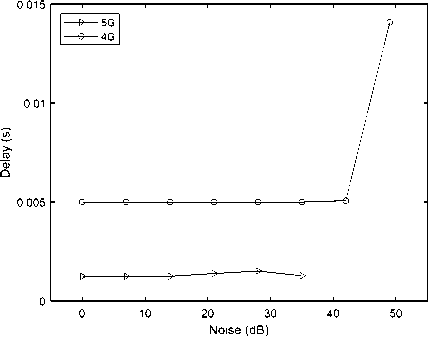
Fig. 5. The Effect of Environmental Noise on Delay (left) and Throughput (right)
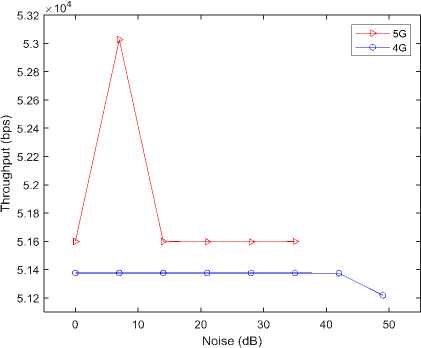
Noise can adversely affect communication quality by introducing interference in signals. Antennas adjust modulation based on CQI to maintain communication and prevent data loss. However, lowering modulation can lead to increased delay. It is evident that higher modulation results in higher data transfer rates and lower latency. Another criterion used to analyze results is the signal-to-noise ratio (SNR). Within the SNR criterion, values surpassing 20 dB indicate excellent communication, while values ranging from 20 to 13 dB signify good communication. Values between 13 and 0 dB correspond to poor communication, and any values below 0 are classified as indicating no signal [20]. In a 5G network, an SNR below 0 is observed for noise levels of 35 dB, resulting in UE-antenna communication falling into the no signal range. On the other hand, 4G networks maintain an SNR above 0 even at a noise level of 49 dB, enabling uninterrupted data exchange. The results indicate that 5G signals are more affected by noise due to the nature of millimeter wave frequencies. Weaker signals are more susceptible to noise and obstacles. Devices equipped with 5G technology will experience performance disruptions when placed in environments with noise levels exceeding 35 dB. In such cases, 4G technology performs better because it utilizes signals with lower frequencies. In 5G antennas, adjusting the frequency within the Sub-1 and Sub-6 ranges will reduce susceptibility to noise.
-
4.3. UE C
-
4.4. DUP
Examining the difference in user count support is a significant criterion for appraising the performance of 5G and 4G networks. Fig. 6 shows the results of challenging 5G and 4G networks by increasing the number of UEs.
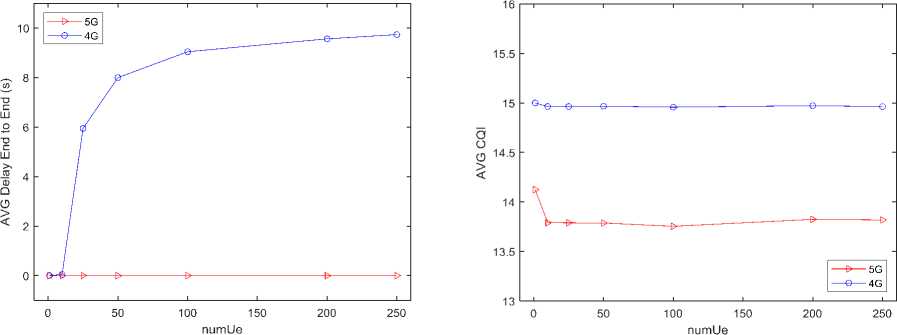
Fig. 6. The Effect of UE's number on AVG Delay End to End (left) and AVG CQI (right)
The results above indicate that as the number of mobile devices increases, 4G networks experience significant latency growth, while 5G networks exhibit meaningful stability. 5G's capacity to provide more bandwidth, higher modulation, increased speed, lower network traffic, and consequently reduced delay is expected. Another advantage is the use of millimeter waves, which occupy less bandwidth. This, combined with more bandwidth, exponentially enables 5G technology to cater to more users compared to 4G technology. Furthermore, reducing the CQI from 15 to 13 does not affect the modulation of the UE-to-antenna communication in the 5G network, ensuring no degradation in performance within this range. On the other hand, within the 4G network, due to lower bandwidth, reduced speed, and heightened delay, the waiting time for packets to reach their destination is extended with the increase in the number of
UEs, eventually leading to a notable decline in network efficiency. 5G technology outperforms 4G in supporting more users, potentially reducing costs for operators by requiring fewer antennas, particularly in densely populated areas.
The 5G and 4G networks can utilize TDD and FDD technologies. Both FDD and TDD technologies present distinct advantages and limitations. Carrying out a comparison between FDD and TDD can assist in achieving a better understanding of the characteristics of 5G and 4G technologies. Fig. 7 shows the impact of using TDD and FDD technologies on the delay metric.
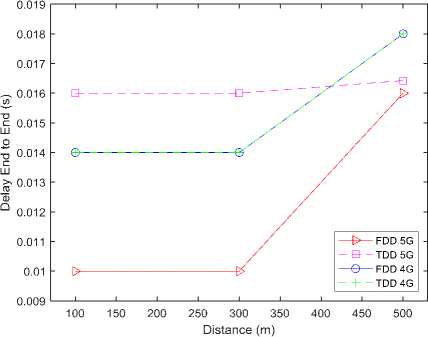
Fig. 7. The Impact of Changing FDD and TDD Technologies on Delay
TDD technology operates by dividing time instead of bandwidth, creating a queue-like process that allocates all bandwidth to either download or upload at any given moment. TDD aims to utilize higher capacity, while FDD technology's key feature is its wider coverage range [21]. However, TDD has weaknesses, such as lower coverage range and reduced penetration through obstacles like buildings [21]. Due to the use of guard intervals in the time axis and between carrier signals, TDD provides less coverage range and causes more delay in data transmission.
The above results show that after activating TDD technology, the delay increases, while the result remains relatively unchanged in 4G technology. TDD is considered a newer technology and is often employed in place of FDD in high-frequency 5G. The main concept behind TDD is to achieve higher data transfer rates and rapid response to requests, especially in high frequencies and millimeter waves. In this scenario, users can access the entire bandwidth with speeds ranging from 10 to 30 Gb/s. As a result, requests are responded to quickly, freeing up the channel to address other users' requests. Therefore, TDD demonstrates its advantages more effectively in high frequencies and wider bandwidths.
-
4.5. SAO
The performance of 5G signals employing millimeter waves and 4G signals utilizing low-frequency waves can vary when facing urban obstacles. Table 4 presents the outcomes from assessing performance against urban obstacles using delay and throughput metrics, and Fig. 8 illustrates the signal performance comparison against urban obstacles with delay metrics.
Table 4. Simulation results of the SAO scenario
|
5G |
4G |
|||
|
Inside building |
Delay |
Throughput |
Delay |
Throughput |
|
False |
1.25e-3 |
51499.59875 |
6.0e-3 |
51358.13473 |
|
True |
1.322e-3 |
51597.43271 |
6.0e-3 |
51358.13473 |
Note. Delay (s); Throughput (Bps).
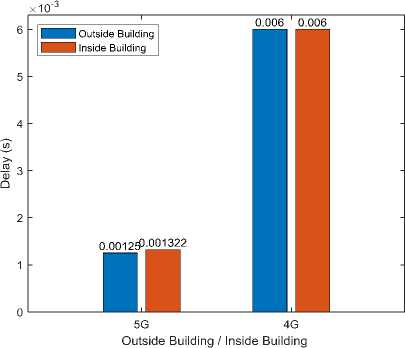
Fig. 8. The Impact of Urban Obstacles on Delay
The above results show that moving the UE inside the building leads to a 7.2-millisecond increase in network delay in 5G, while no significant change is observed in the 4G network. This discrepancy is attributed to the nature of millimeter waves, making the signal more susceptible to obstacles due to the weaker nature of high-frequency waves. The simulation results further corroborate these findings. Obstacles can pose challenges for 5G technology. Operators may need to install more antennas to achieve the desired coverage for improved accessibility.
-
4.6. N RB
Bandwidth and packet size parameters stand as factors influencing the performance of wireless networks. The coefficient of these effects can vary based on the characteristics of 5G and 4G networks. Fig. 9 shows the impact of increasing bandwidth and packet size on delay and throughput metrics.
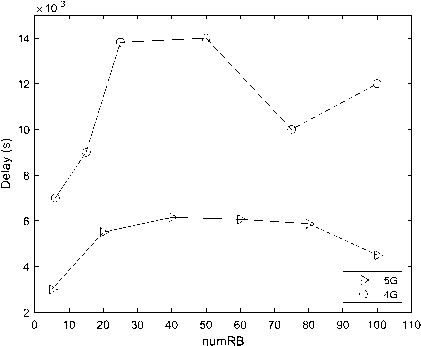
Fig. 9. Impact of Bandwidth Change on Delay (left) and Throughput (right)
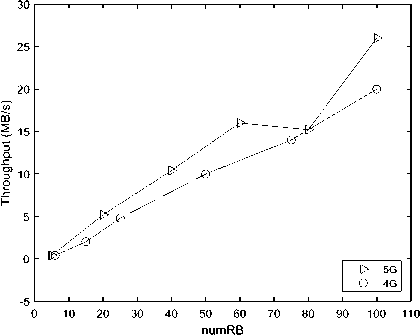
The adjustment of parameters in this part aims to increase Throughput. The above results show that the increase in packet size leads to higher Delay, resulting in more bandwidth usage, increased traffic, and overload on UE devices. On the other hand, the increase in bandwidth helps control the delay to some extent. The simulation results show that 4G networks are more sensitive to the increase in packet size, and as a result, the delay increase factor is much higher than the 5G network. Therefore, the 5G network has shown better performance against the increase in packet size, which is one of the reasons for the higher transmission speed of data using millimeter waves.
Also, in terms of the throughput metric, the 5G network has demonstrated better performance. The download speed in 5G increased from 400kbs to 26Mbs, while in 4G, it increased from 30kbs to 19Mbs. This superiority of 5G, considering the use of millimeter waves with higher speed and lower delay, is justifiable.
Since the increase in bandwidth along with the increase in packet size does not show the effects of bandwidth well, in the second part of the simulation, the packet size is kept constant, and only the bandwidth parameter is increased. The simulation results are shown in Fig. 10.
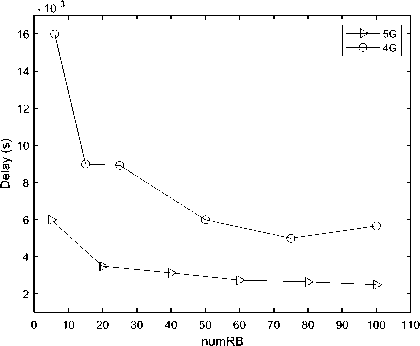
Fig. 10. The Impact of Bandwidth Change on Delay (left) and Throughput (right)
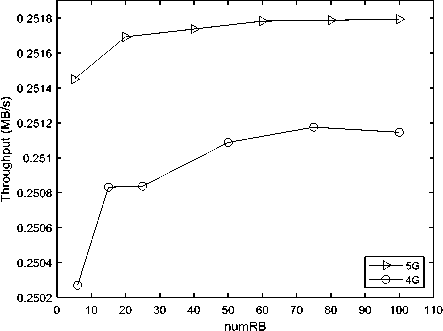
Unlike the previous part, where Delay experienced an increasing trend, the fixed packet size and increased bandwidth in this part led to a decreasing trend in Delay. Additionally, the second part showed a significant change in Throughput for 5G technology compared to the first section of the scenario. The increase in bandwidth had a notable impact on boosting the throughput of 5G technology, which can be attributed to the nature of millimeter waves, as previously explained.
The results of both parts in this scenario confirm that users have experienced better quality with higher speed and lower latency in 5G technology compared to 4G technology. The higher speed, along with lower latency, significantly enhances the impact of this improvement.
The examination of various parameters shows that the coverage of 5G technology is inferior to that of 4G technology. In a way, 5G technology was unable to provide service at a distance of 575 meters from the antenna, while 4G technology operates smoothly in this range. Furthermore, the results indicate that the susceptibility of 5G signals to noise is much higher than that of 4G signals. According to the measurements, service in 5G technology is disrupted at a noise level of 35 dB, whereas this number is 56 dB in 4G technology. The results indicate that the network capacity of 5G in supporting more users is higher than that of 4G technology. This result is particularly evident from the delay metric, where beyond 20 users, significant delays disrupt 4G technology. By moving the UE inside a building, the network delay of 5G increased by 7.2 milliseconds, while this experiment did not show any change in the performance of 4G technology, indicating the greater susceptibility of 5G signals to urban obstacles.
5. Conclusion
To compare the characteristics of 5G and 4G networks under various scenarios, this study conducts multiple simulations using the OMNet++ simulator. The outcomes of comparing signal strength and antenna coverage range, based on the distance parameter, indicate that 4G networks exhibit a broader coverage area compared to 5G networks. On average, 5G signals are -16.95 dBm weaker than 4G signals at the equivalent distances. At a distance of 330 meters in 5G, unstable connection quality is observed, and from a distance of 575 meters, the signal practically falls into the No Signal range. This is while at these distances, 4G technology can still provide service to UE without any problems. Results show that 5G signals are more susceptible to noise interference, and 4G technology performs better in noise above 14 dB. 5G technology has a much higher capacity to support the number of active devices connected to the network. In this comparison, after increasing the number of UE from 10 onwards, the delay in the 4G network increased significantly by an observable amount, with the end-to-end delay reaching more than 8.4 seconds on average. The results of the FDD and TDD technology assessment show that the increase in distance is one of the weaknesses of TDD compared to FDD, especially in 5G technology. Also, using TDD can cause a relative increase in delay compared to FDD. Based on the results, it can be concluded that encountering obstacles in the 5G signal causes more delay and performance degradation compared to 4G. The comparison of packet size increase showed more delay increase in 4G technology. On the other hand, the enhancement in bandwidth bolstered the performance of both 5G and 4G technologies. However, its positive impact on 5G technology has surpassed its effect on 4G technology. The presented results suggest that using 5G antennas in geographically limited and densely populated areas, such as rural regions, would be more cost-effective compared to using 4G antennas. This is because fewer antennas are required to serve more users without the need for extensive coverage. Additionally, numerous obstacles in urban areas pose challenges to 5G technology, thus requiring a greater number of antennas to achieve satisfactory accessibility.
Список литературы Evaluating the Capacities and Limitations of 5G and 4G Networks: An Analysis Approach
- A. Abdulghaffar, A. Mahmoud, M. Abu-Amara and T. Sheltami, "Modeling and Evaluation of Software Defined Networking Based 5G Core Network Architecture," IEEE Access, vol. 9, pp. 10179-10198, 2021.
- M. A. Habibi, M. Nasimi, B. Han and H. D. Schotten, "A Comprehensive Survey of RAN Architectures Toward 5G Mobile Communication System," IEEE Access, vol. 7, pp. 70371-70421, 2019.
- I. Afolabi, T. Taleb, K. Samdanis, A. Ksentini and H. Flinck, "Network Slicing and Softwarization: A Survey on Principles, Enabling Technologies, and Solutions," IEEE Communications Surveys & Tutorials, vol. 20, no. 3, pp. 2429-2453, 2018.
- A. Dogra, R. K. Jha and S. Jain, "A Survey on Beyond 5G Network with the Advent of 6G: Architecture and Emerging Technologies," IEEE Access, vol. 9, pp. 67512-67547, 2021.
- H. Althumali and M. Othman, "A Survey of Random Access Control Techniques for Machine-to-Machine Communications in LTE/LTE-A Networks," IEEE Access, vol. 6, pp. 74961-74983, 2018.
- G. Cisotto, E. Casarin and S. Tomasin, "Requirements and Enablers of Advanced Healthcare Services over Future Cellular Systems," IEEE Communications Magazine, vol. 58, no. 3, pp. 76-81, 2020.
- H. Chen et al., "Ultra-Reliable Low Latency Cellular Networks: Use Cases, Challenges and Approaches," IEEE Communications Magazine, vol. 56, no. 12, pp. 119-125, 2018.
- M. Attaran, “The impact of 5G on the evolution of intelligent automation and industry digitization,” Journal of Ambient Intelligence and Humanized Computing, vol. 14, no. 5, pp. 5977–5993, 2021.
- A. Ahad, M. Tahir, and K.-L. A. Yau, “5G-Based Smart Healthcare Network: architecture, taxonomy, challenges and future research directions,” IEEE Access, vol. 7, pp. 100747–100762, 2019.
- R. P. Lopes et al., “A multi-layer probing approach for video over 5G in vehicular scenarios,” Vehicular Communications, vol. 38, p. 100534, 2022.
- L. Mishra, Vikash, and S. Varma, “Seamless health monitoring using 5G NR for internet of medical things,” Wireless Personal Communications, vol. 120, no. 3, pp. 2259–2289, 2021.
- A. Narayanan et al., “A First Look at Commercial 5G Performance on Smartphones,” Association for Computing Machinery on Proceedings of the Web Conference 2020 (WWW '20), pp. 894–905, 2020.
- P. J. Mateo, C. Fiandrino and J. Widmer, "Analysis of TCP Performance in 5G mm-Wave Mobile Networks," IEEE International Conference on Communications (ICC), pp. 1-7, 2019.
- D. Moltchanov, A. Ometov, P. Kustarev, O. Evsutin, J. Hosek, and Y. Koucheryavy, “Analytical TCP model for Millimeter-Wave 5G NR systems in dynamic human body blockage environment,” Sensors, vol. 20, no. 14, p. 3880, 2020.
- R. Poorzare and A. Calveras, “FB-TCP: a 5G MMWave friendly TCP for urban deployments,” IEEE Access, vol. 9, pp. 82812–82832, 2021.
- I. Mahmud, T. Lubna, and Y.-Z. Cho, “Performance evaluation of MPTCP on simultaneous use of 5G and 4G networks,” Sensors, vol. 22, no. 19, p. 7509, 2022.
- L. C. Alexandre, A. Linhares, and S. A. Cerqueira, “Indoor Coexistence Analysis Among 5G New Radio, LTE-A and NB-IoT in the 700 MHz Band,” IEEE Access, vol. 8, pp. 135000–135010, 2020.
- J. Navarro-Ortiz, S. Sendra, P. Ameigeiras, and J. M. Lopez-Soler, “Integration of LoRAWAN and 4G/5G for the industrial internet of things,” IEEE Communications Magazine, vol. 56, no. 2, pp. 60–67, 2018.
- R. Yasmin, J. Petäjäjärvi, K. Mikhaylov and A. Pouttu, "On the integration of LoRaWAN with the 5G test network," IEEE 28th Annual International Symposium on Personal, Indoor, and Mobile Radio Communications (PIMRC), pp. 1-6, 2017.
- A. Bellary, K. Kandasamy, and P. H. Rao, “Analysis of wave propagation models with radio network planning using dual polarized MIMO antenna for 5G base station applications,” IEEE Access, vol. 10, pp. 29183–29193, 2022.
- B. Cai, C. Hu, W. Xie and X. Xia, "Analysis and Field Trial on FDD NR Based on 2.1GHz," IEEE/CIC International Conference on Communications in China (ICCC Workshops), pp. 321-325, 2021.
- S. Chen, S. Sun, G. Xu, X. Su, and Y. Cai, “Beam-Space Multiplexing: practice, theory, and trends, from 4G TD-LTE, 5G, to 6G and beyond,” IEEE Wireless Communications, vol. 27, no. 2, pp. 162–172, 2020.
- M. Matalatala, M. Deruyck, E. Tanghe, L. Martens, and W. Joseph, “Performance evaluation of 5G Millimeter-Wave cellular access networks using a Capacity-Based network deployment tool,” Mobile Information Systems, vol. 2017, pp. 1–11, 2017.
- L. F. Ribeiro, D. W. Tokikawa, J. L. Rebelatto, and G. Brante, “Comparison between LoRa and NB-IoT coverage in urban and rural Southern Brazil regions,” Annales Des Télécommunications, vol. 75, no. 11–12, pp. 755–766, 2020.
- M. Behjati, M. A. Zulkifley, H. a. H. Alobaidy, R. Nordin, and N. H. Abdullah, “Reliable Aerial Mobile Communications with RSRP & RSRQ Prediction Models for the Internet of Drones: A Machine Learning Approach,” Sensors, vol. 22, no. 15, p. 5522, 2022.
- R. Ali, B.-S. Kim, S. W. Kim, H. S. Kim, and F. Ishmanov, “(ReLBT): A Reinforcement learning-enabled listen before talk mechanism for LTE-LAA and Wi-Fi coexistence in IoT,” Computer Communications, vol. 150, pp. 498–505, Jan. 2020.
- I. U. Rehman, M. M. Nasralla, A. Ali and N. Philip, "Small Cell-based Ambulance Scenario for Medical Video Streaming: A 5G-health use case," 15th International Conference on Smart Cities: Improving Quality of Life Using ICT & IoT (HONET-ICT), pp. 29-32, 2018.

